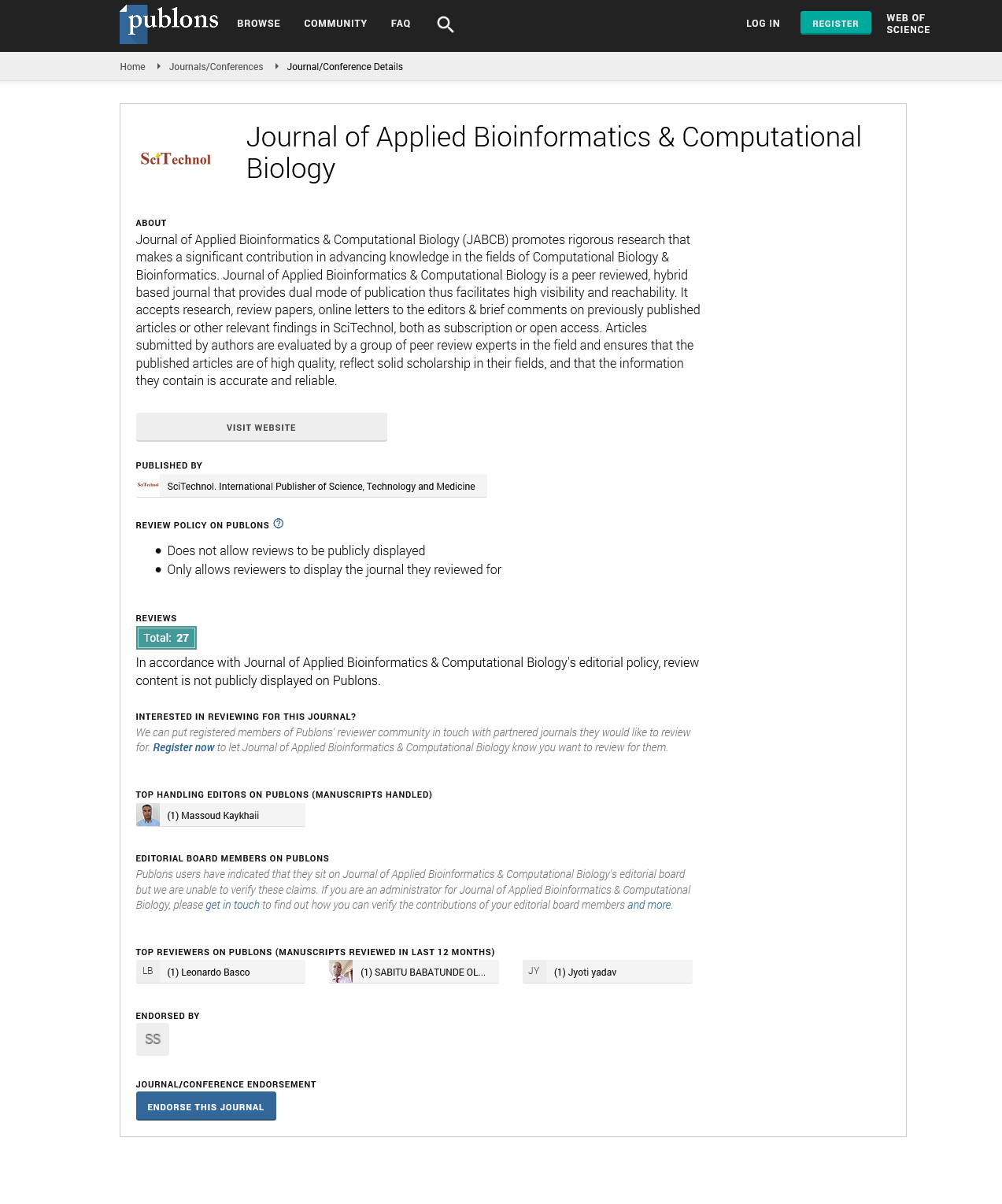From the structure and function of the ribosome to new antibiotics
Thomas A Steitz
Yale University, and Howard Hughes Medical Institute, USA
: J Appl Bioinforma Comput Biol
Abstract
We have obtained many insights into the structural basis of ribosome function in protein synthesis from our structural studies of the large ribosomal subunit as well as the 70S bacterial ribosome, and their complexes with substrates, protein factors or antibiotics. These have elucidated the mechanism by which this ribozyme catalyzes peptide bond formation and the specificity and mode of its inhibition by antibiotics. We have obtained the structure of the complex of the 70S ribosome with tRNAs and EF-G in a previously unseen compact conformation. This compact conformation of EF-G, unlike the elongated one, allows the simultaneous binding of a tRNA in the A site and EF-G. We propose that the conversion of the compact to the elongated conformations of EF-G is responsible for tRNA translocation. The structures of the 70S ribosome with the factor EF4 (LepA) with tRNA bound in the P site or in the A and P sites provide the first insights into EF4’s possible role in protein synthesis. Our structure of the 70S ribosome bound with a ribosome rescue protein (yaeJ) shows how it rescues stalled ribosomes. The structures of some of our antibiotic complexes have been used by Rib-X Pharmaceuticals, Inc. (now Melinta Therapeutics) of New Haven to develop new potential antibiotic compounds that are effective against MRSA, one of which has successfully completed phase II clinical trials. Recently, we have obtained the structures of the 70S ribosome complexed with various oligopeptides that bind in the peptide tunnel, but in the opposite direction from peptides being synthesized.
Biography
E-mail: thomas.steitz@yale.edu
 Spanish
Spanish  Chinese
Chinese  Russian
Russian  German
German  French
French  Japanese
Japanese  Portuguese
Portuguese  Hindi
Hindi 
